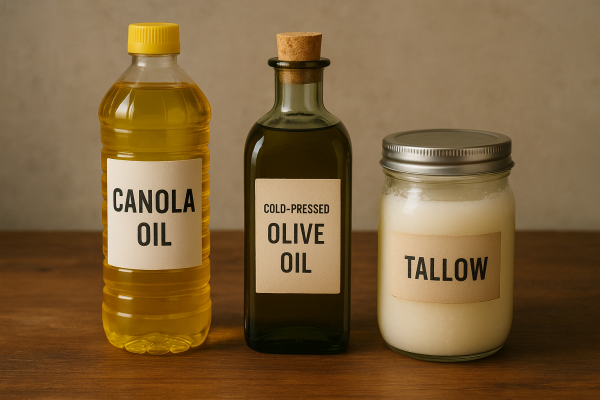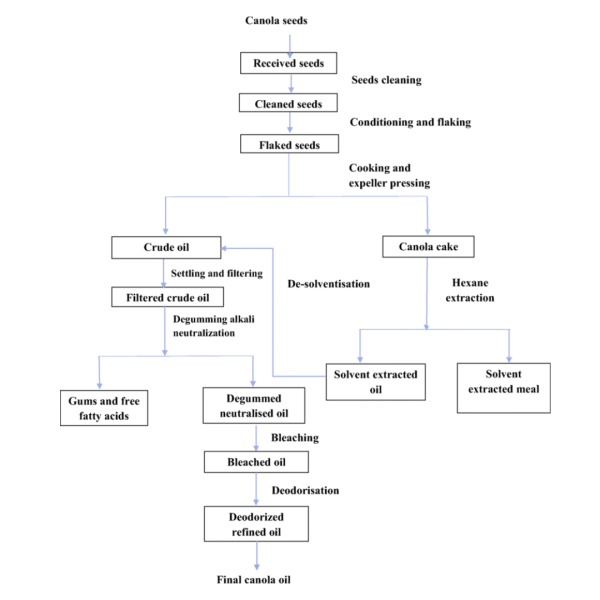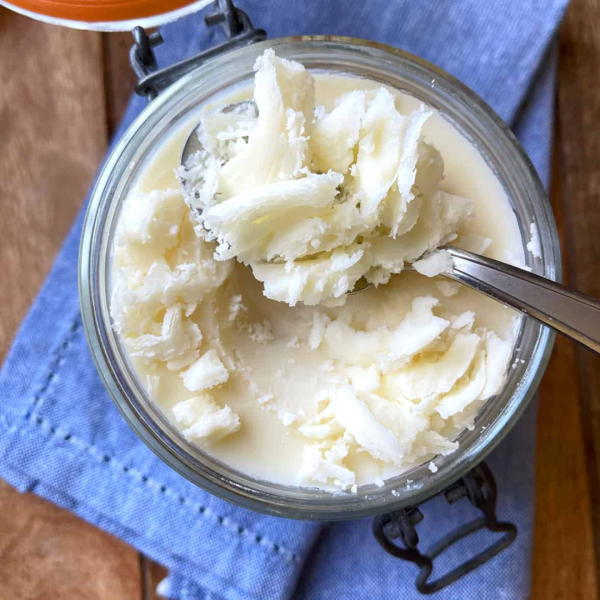Seed Oils: Are They Helping or Hurting Your Body?
From inflammation to energy, the impact of oils goes deeper than “good” or “bad.” Learn how balance, processing, and smarter swaps make all the difference.
The Overhaul 12 months on:
It’s been over a year now since Barry and I did a radical diet overhaul.
Eating what would be classified as a traditionally ‘healthy diet’ we were sluggish, brain fogged, bloated and not feeling our best. What could we do to shift the needle on our health? Cue a load of reading and research and the first thing we did was completely remove all seed & vegetable oils. They were gone from our diet, immediately.
The next few months was extremely telling, our brain fog cleared, our digestion improved, our inflammation markers went right down and our energy improved.
So, we have made the decision to keep them out for good, and this is a decision that wasn’t made lightly.
Just turn over anything you buy in a packet, and I guarantee there is a vegetable or seed oil in there (look at that carton of almond/oat/soy milk – chances are high that contains a vegetable/seed oil 2nd or 3rd on the ingredients list..EWwww!), so that means we are a processed food free household.
We know this isn’t for everyone, so we wanted to put an article together so you can make informed choices about what you put in your body, especially if your inflammation is high, you have gut issues, autoimmune issues and/or pain.
We want you to understand the REASONING behind making these decisions past ‘is it good or bad because of what I’m told’, by understanding from a cellular level the effects these compounds have.
So, seed and vegetable oils, are they bad for us, good for us, or do they not really matter? The truth is—it depends. And if we want to get real about it, we need to dig deeper.

Seed Oils: Not All Are Created Equal
Seed oils come from pressed seeds, but just like proteins are made of amino acids, oils are made of fatty acids. Different oils have different fatty acid profiles, and these profiles dictate how they affect your body.
Some, like corn and soy oils, are very high in omega-6 fatty acids. These are essential, meaning your body cannot make them—but too much omega-6, especially without enough omega-3, creates inflammation, higher cortisol, and even fat storage. On the other hand, oils like flax and chia are rich in omega-3s, which help balance inflammation, support fat loss, and regulate cortisol.
Balance is key.
Ideally, we want omega-6 and omega-3 to be roughly equal in our diets. But thanks to processed foods and the widespread use of high omega-6 oils in cooking and even in farmed animal feed, most people have ratios of 20:1 or even 40:1 omega-6 to omega-3. That’s not just bad it’s a recipe for inflammation and low energy.
Saturated vs Unsaturated Fats: How They Affect Your Cells
Each of our cells is made up of roughly 50% protein and 50% fat. (there are other things in there but these are the largest two factors) The cell membrane, which surrounds every cell in our body, is made up of fatty acids.
Half of these are saturated fats. YES the are GOOD for you and essential to life – contrary to what we have been told during the anti-fat campaigns of the 80s/90s) the other half are unsaturated fats.
- Saturated fats (like butter, coconut oil, and tallow) are solid and stiff. This rigidity is important because it helps hold the structure of your cells, giving them shape and stability.
- Unsaturated fats (like omega-3 and omega-6 oils) are flexible and liquid at room temperature. This flexibility allows cells to move through tiny blood vessels, absorb nutrients, and expel waste.
Here’s the problem: when unsaturated oils from processed seed oils are chemically refined and cooked at high heat, their structure changes. They lose flexibility, producing free radicals and toxic aldehydes that damage cells, mitochondria, DNA, and even your skin. Your cells then struggle to function, they can’t absorb nutrients properly, remove toxins efficiently, or produce energy effectively. And because your body is just a collection of cells, your overall health takes a hit.

Why Processed Seed Oils Are Problematic
Even if an oil is technically “good,” industrial processing can destroy its benefits:
- Chemical extraction (like hexane for soy, canola & sunflower oil) removes nutrients and can leave toxic residues.
- High-heat refining changes the molecular structure, creating toxic aldehydes like formaldehyde (!! We definitely don’t want that in a living body thanks!)
- Overuse in processed foods makes these oils omnipresent, throwing your omega-6 to omega-3 ratio even further out of balance.
Some of the effects include increased inflammation, oxidative stress, accelerated aging, skin irritation, hormone disruption, and even potential cardiovascular issues.
Take a good look at the labels of the foods you buy and see just how much highly processed seed and vegetable oils you are consuming and how easy it is to skew the balance of omegas without realising.
Ultra processed foods dressed up as health foods are our biggest pet peeve. Things like nut milks that are touted as the healthier alternative to cows’ milk more often than not contain HIGH amounts of highly processed seed/vegetable oils.
Take Oatly Oat milk for example:
Oat base (water, oats 10%) rapeseed oil (canola oil) acid regulator (dipotassium phosphate) calcium carbonate calcium phosphates salt vitamins (D3, riboflavin and B12)
Or
So Good Barista Almond milk:
Filtered Water, Australian Ground Almonds (3%), Cane Sugar, Corn Maltodextrin(thickener), Vegetable Oils (Sunflower, Canola), Acidity Regulator (Potassium Phosphate), Mineral (Calcium), Emulsifier (322), Salt, Vegetable Gums (410, 418), Antioxidant (Ascorbic Acid), Vitamins (B12, B2, B1) * All ingredients are of non-animal origin.
Compared to regular milk:
Which contains…Milk.
Now obviously we must take allergies into account here, so if you do need a milk alternative, make sure to find one that isn’t full of heavily processed oils!
So What Oils Should We Use?
Not all oils are bad. The key is source, processing, and how you cook with them:
- Avoid: chemically refined, high omega-6 oils (corn, soy, canola, sunflower, safflower, peanut, cottonseed, grapeseed).
- High heat cooking: tallow, ghee, coconut oil, avocado oil. These fats are stable at high temperatures, don’t produce harmful aldehydes and are nutrient-rich.
- Moderate heat: extra virgin olive oil, avocado oil. Can also be used raw.
- Raw/cold use: flax seed oil, chia seed oil, olive oil, macadamia oil, avocado oil. Great for dressings, smoothies, and finishing dishes.

Tallow: The Underrated Fat
Tallow is rendered beef fat, ideally from grass-fed cows. It’s rich in saturated and monounsaturated fats, making it stable under high heat. It’s also packed with fat-soluble vitamins (A, D, E, K) that support skin, bones, and immune health.
Because tallow holds its structure when heated, it’s ideal for frying or roasting, and it won’t produce the damaging free radicals you get from processed seed oils. Even better, it can be incorporated raw in small amounts for flavour and satiety.
Practical Takeaways
- Balance your omega-3 and omega-6: fatty fish, chia, flax, and high-quality omega-3 supplements.
- Avoid chemically processed, high omega-6 seed oils.
- Use stable fats for cooking: tallow, ghee, coconut oil, avocado oil.
- Use raw oils wisely: olive oil, flax, chia, macadamia, avocado.
- Protect your cells: antioxidants help neutralize free radicals and support cell function.
Switching to the right oils, cooking wisely, and balancing your fatty acids can make a huge difference in energy, inflammation, recovery, skin health, and overall wellness.



